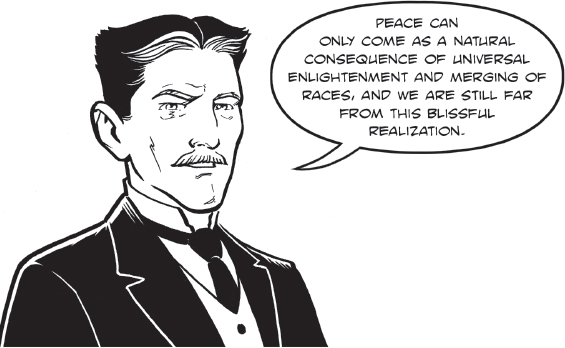

KATHARINE JOHNSON'S DEATH IN 1925 contributed further to Tesla's estrangement from society. Her letters had given him a sense of connection and being cared for; now he retreated into his communion with pigeons. According to friend and biographer John O'Neill, he singled out one in particular:
a beautiful bird, pure white with light gray tips on its wings; that one was different. It was a female. I would know that pigeon anywhere.... No matter where I was that pigeon would find me; when I wanted her I had only to call her and she would come flying to me. She understood me and I understood her.... I loved that pigeon, I loved her as a man loves a woman, and she loved me... As long as I had her, there was a purpose in my life. (O'Neill, Prodigal Genius: The Life of Nikola Tesla)
But even the pigeons would become a cause of consternation. Not only would Tesla have to move from hotel to hotel for not paying his bills, but the accumulation of pigeon excrement around his rooms motivated hotel proprietors to evict him. His possessions—dozens of trunks containing documents, correspondence, theoretical papers, and invention models—were carted from one storage facility to another.
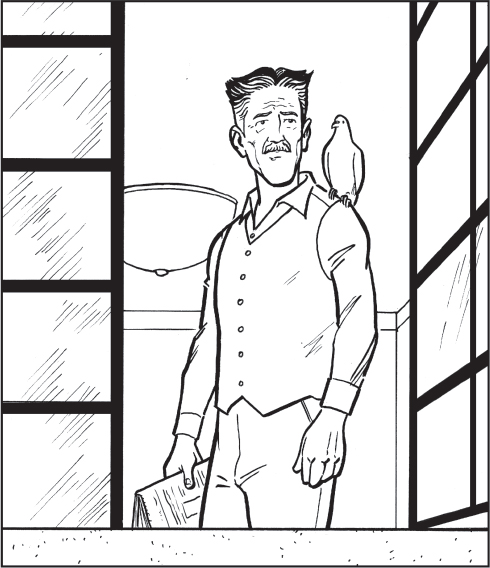
Tesla valued his privacy and could be curt with hotel employees, ordering them to remain at least three feet from him. Then, broke but contrite, he would generously tip hotel staff in order to make amends for his brusk manners.
With his days as an inventor behind him, Tesla found solace in his pigeons and indulged his eccentricities. He had always been a fastidious dresser, but by the 1930s his clothes were largely out of fashion, a throwback to another era. His fear of germs became the stuff of gossip. Meanwhile, Tesla was living off a trickle of royalties from the speedometer, some motors, and published articles. Eventually the Westinghouse Corporation agreed to pay him a monthly consulting fee and cover his hotel rent.
Tesla was back in the spotlight on July 20, 1931, when his picture graced the cover of Time magazine to mark his 75th birthday. The accompanying article set the tone for greeting reporters who would flock to him on subsequent birthdays. Tesla did not disappoint, making astonishing predictions for the future.
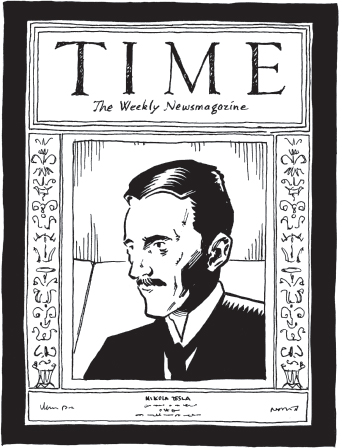
Pigeons were not the only flights of fancy for the aging Nikola Tesla. He continued to believe that his inventions could serve the good of all humankind. He believed that being able to communicate with pigeons was of a higher order. Similarly he felt that when he signaled other planets he reached other life forms. If he were able to signal other planets, he believed then he should be able to signal humans globally in the same fashion. Communication distances between all inhabitants would be shortened. With improved communication, the world would be a better place. Differences between peoples could be overcome. As a man of peace he believed wars could be avoided through improved communication
Transmitting wireless energy across the solar system held a grip on his thinking. He issued pronouncements on cosmic rays, transmitting mechanical energy, and particle beam weaponry, reasoning that if he could develop inventions in these areas then wars would no longer be necessary. Machines would settle any differences. From the 1930s to his death, Tesla claimed to have invented a “peace ray,” a particle-beam projector he called a teleforce. The fanciful weapon was thought of instead as a “death ray,” a reputation he attempted to dispel in an interview for an October 1934 article in Every Week magazine, “Dr. Tesla Visions the End of Aircraft in War.”
The beam, intended chiefly for defense, will be projected from an electric power plant, ready to be put in action at the first sign of danger. The cost of operation will be insignificant, as the plant is chiefly intended for use in times of peace ... nothing in common with the so-called “death ray.”... It is impossible to develop such a ray. I worked on that idea for many years before my ignorance was dispelled and I became convinced that it could not be realized.
Did even a design for such a weapon exist? The U.S. military did not investigate further, but the FBI was fearful and went to great pains to confiscate Tesla's papers upon his death. After ten years of scrutiny, the papers were shipped to Belgrade under the auspices of Tesla's nephew, Sava Kosanović, the U.S. ambassador to Yugoslavia. The material is now housed at the Nikola Tesla Museum in Belgrade.
No “death ray” was ever found.
Since Tesla worked in a shroud of secrecy, he has left a legacy of mystery. Even if there was no death ray, other inventions are rumored to have resulted from his particle beam research. For example, Tesla professed to have created a secret apparatus that could produce energy in free air, thus eliminating the need for a high vacuum. This would also enable him to produce an electrical force of immense power, amplify that force, and ultimately produce a tremendous electrical repelling force.
On the occasion of his birthday throughout his remaining years, Tesla would make predictions and offer insights that bordered on—or clearly entered—the realm of the absurd.
In the meantime, the world still awaited his apparatus that would transmit mechanical energy to any part of the globe and his atom smasher that would produce inexpensive radium.
In 1936, to commemorate his eightieth birthday, the Yugoslavian government founded the Tesla Institute in Belgrade for the purpose of conducting applied research in electrical engineering.
The following year, Tesla would be honored by the Yugoslavian and Czechoslovakian governments with the Order of the White Eagle and the Order of the White Lion, respectively.
The celebrated inventor would also receive an annual monetary honorarium from the Yugoslavian government during his final years. In March 1937, meanwhile, he was elected to the Serbian Royal Academy of Sciences.
The year 1937 also marked a major turning point in Tesla's personal life. His friend Robert Underwood Johnson passed away that October after a series of illnesses. With both Katharine and Robert now gone, Tesla was all but alone with his pigeons. That August, departing the Hotel New Yorker late one night to feed pigeons in the park, Tesla was hit by a taxi and thrown across the street. Refusing medical treatment, he limped back to the hotel and engaged a messenger to feed the pigeons until he could resume his routine. Tesla's health declined in the succeeding months, as he grew gaunt from his limited diet and undiagnosed ailments that may have resulted from the accident.
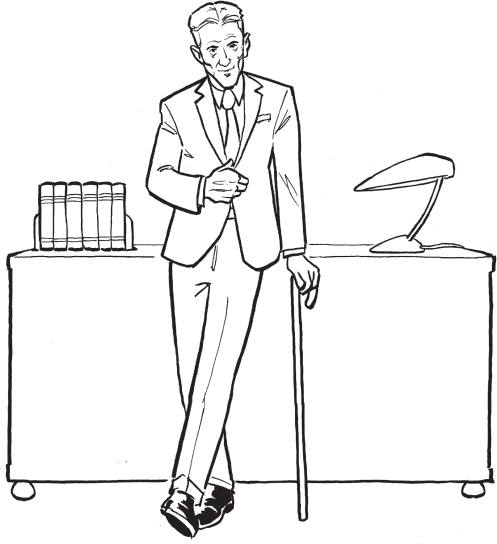
Tesla's withdrawal from society and failing health would become even more marked during the early 1940s. He grew increasingly paranoid about germs and became ever weaker and more emaciated. He took to bed sometime in 1942 and died quietly in his sleep, alone and penniless, on January 7, 1943. The next day, a maid ignored the “Do Not Disturb” sign on his door and discovered Tesla's body in Room 3327 of the Hotel New Yorker.
Before he could receive a funeral, the FBI—under the pretense that Tesla had been conducting espionage for Germany—ordered the seizure of all his belongings from the several hotels in which he had lived. The entire estate would remain in storage for almost a decade, until the FBI deemed it safe to be shipped to the Tesla Museum in Belgrade.
On January 12, 1943, more than 2000 people attended a state funeral, underwritten by the Yugoslav Government, at the Episcopal Cathedral of St. John the Divine in New York City. Mayor Fiorello La Guardia delivered a radio eulogy. Tesla's body was removed to a cemetery in nearby Ardsley, NY, where it would be cremated. Years later, his ashes were shipped to the Tesla Museum.
On June 21, 1943, in reversing an earlier patent ruling, the United States Supreme Court formally recognized Nikola Tesla as “the Father of Radio.”
IT WOULD BE EASY TO END THE STORY HERE and say that Nikola Tesla was richly rewarded and highly honored—as well as maligned—both during his lifetime and after. Indeed he bore the mark of genius and left the world many gifts. He was a discoverer and an inventor who towered over the likes of Thomas Edison and Guglielmo Marconi, who have been more lionized. Even Edison's most famous invention, the incandescent light bulb, has been superseded by Tesla's fluorescent bulb and, more recently, programmable LED bulbs.
Tesla did not come to the United States and pursue his dreams of invention for the purpose of getting rich. He was totally disinterested in money except as a means of financing his research. His great early goal was to share his discovery of AC with the world and enable electricity to do the work of humanity. An innovator and iconoclast whose eccentricities we are now able to identify as obsessive compulsive disorders, Tesla exited the world with a record of achievement that is instrumental to all things electrical. He registered hundreds of patents but left few blueprints. A circle of mystery shrouds his life's work, but his legacy includes sustainable electric power, radar, radio, and wireless electrical power.
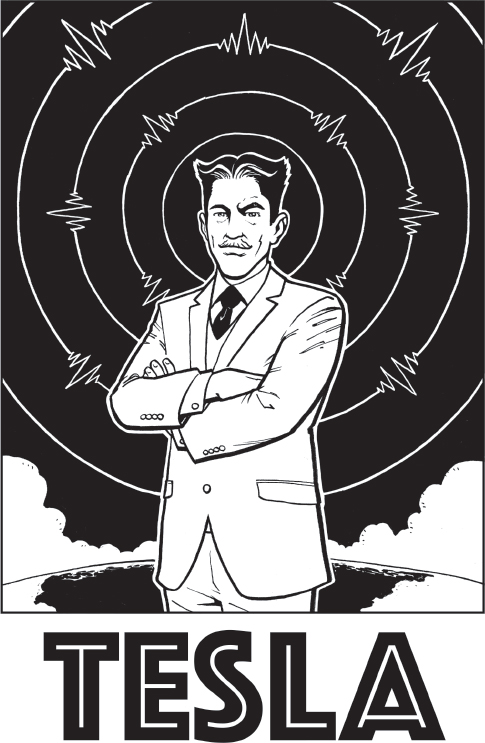
Many of Tesla's predictions are the stuff of science fiction, contributing to his image as a cult figure, maverick, and untapped genius. Then again, many of his discoveries and inventions were so far ahead of their time that they seemed like science fiction at the time but later came to fruition. Tesla's patents continue to be mined as the basis of cutting-edge inventions. His bold innovation and out-of-the-box thinking have inspired the likes of Bill Gates, Steve Jobs, and Elon Musk to name a few. Perhaps you, too, will find inspiration in his life and work.
Tesla's undaunted spirit remains very much alive today as scientists, inventors, and entrepreneurs forge ahead in areas he pioneered:
STAY TUNED FOR THE NEXT INVENTION INSPIRED BY NIKOLA TESLA!